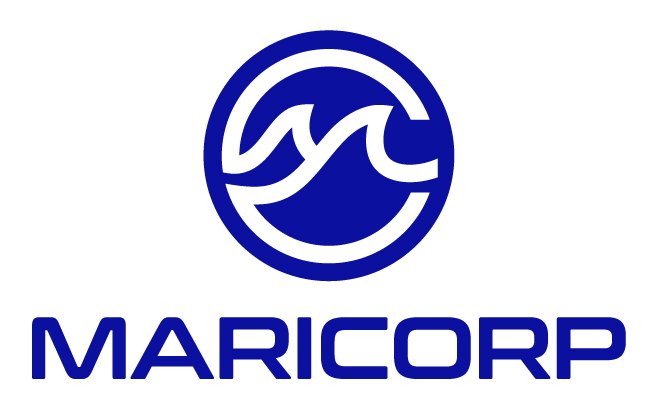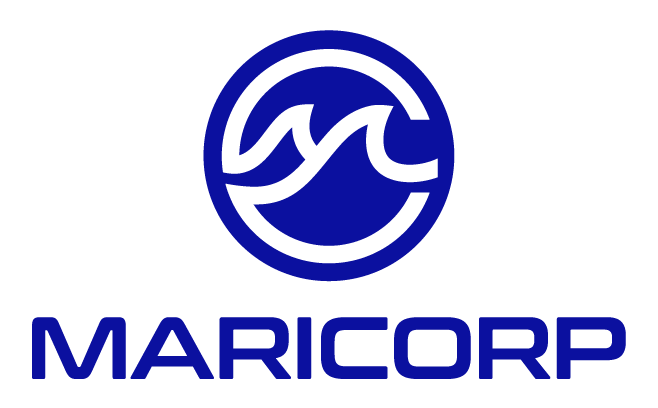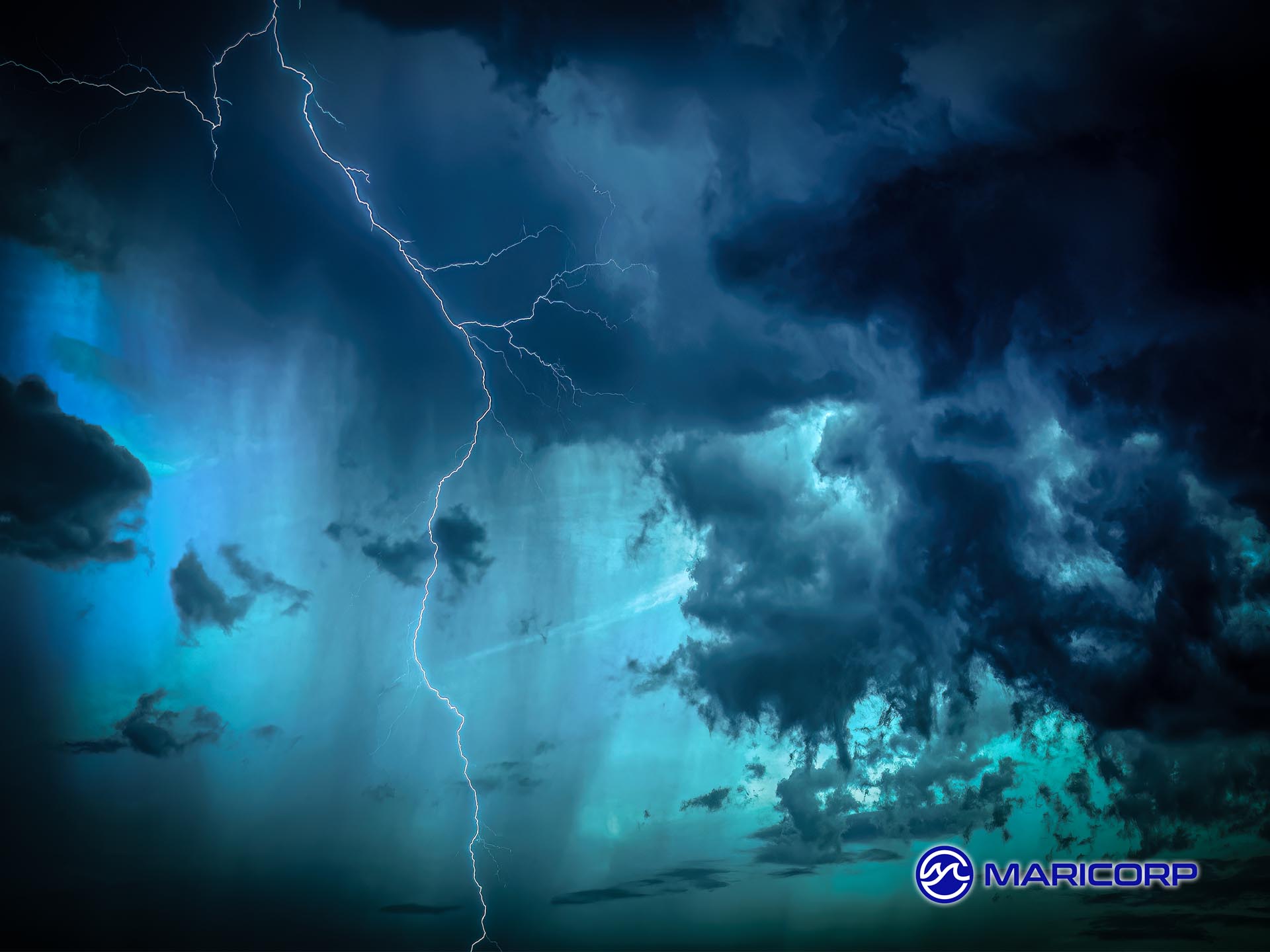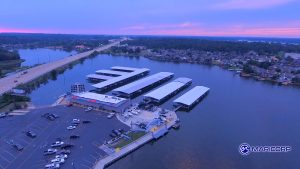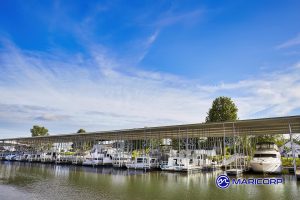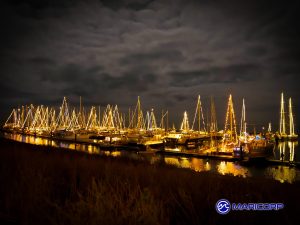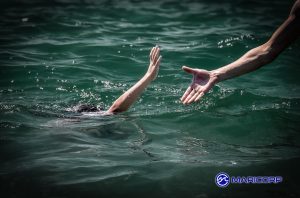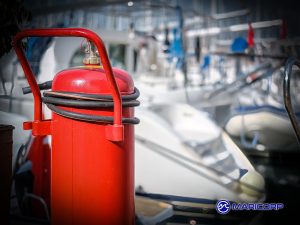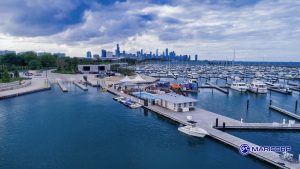Heat and Hurricanes: August Weather Safety
Summer’s Final Storm Surge
By August, marinas across the U.S. have already seen their fair share of summer sun but the real test often comes late in the season. With heat domes, surprise squalls, and the peak of hurricane activity looming, it’s critical that marina teams revisit their August weather safety protocols and get serious about preparedness.
NOAA designates mid-August through late September as the most active portion of the Atlantic hurricane season. Even inland marinas can be affected by strong winds, flooding, and lightning from tropical systems or late summer storm fronts. Meanwhile, prolonged high temperatures can put pressure on cooling systems, fuel lines, and most importantly, your crew and customers.
Rather than wait for the first radar alert or NOAA bulletin to act, the best defense is a well timed offense. An updated storm checklist, staff training refreshers, and a marina wide review of heat related risk points can save you from damage, downtime, and liability during August’s most unpredictable days.
Recognizing Heat Risks for Staff and Infrastructure
While hurricanes make the headlines, extreme heat is often the silent stressor of late summer and for marinas, the risks go well beyond sunburn. Dockhands, fuel attendants, and maintenance crews are frequently outdoors during peak heat hours, often in full sun with little shade or airflow. Without proper protocols in place, heat exhaustion can escalate quickly into heatstroke.
August temperatures can also stress infrastructure. Prolonged heat waves impact fuel line integrity, dry out landscaping around shoreline stabilization, and overheat utility boxes or onboard air conditioning units. For marinas using floating docks, low water levels due to evaporation can strain connections and gangways.
As part of your August weather safety plan, review hydration and break schedules for staff, especially during boat turnarounds and busy fueling hours. Consider shade sails or portable canopies near fuel docks, break areas, and maintenance zones. Heat illness training and visible signage listing symptoms and response steps can go a long way in preventing emergencies.
And don’t overlook your guests, offering sunblock, water stations, or shaded picnic areas makes your marina not only safer, but more hospitable. A good storm checklist includes more than wind protocols; it accounts for the kind of heat that can sink your operations long before any rain falls.
Peak Hurricane Season: What to Expect and Watch For
From the Gulf Coast to the Carolinas, and even up through the Northeast, August is when tropical weather systems really start to spin. As sea surface temperatures peak and atmospheric conditions align, the second half of summer brings a noticeable uptick in hurricane and tropical storm formation. Even if a full blown storm never makes landfall, the ripple effects can reach far and wide.
For marina operators, August weather safety means not just watching the National Hurricane Center’s forecast but knowing how tropical systems will affect your specific geography. A storm hundreds of miles offshore can still bring destructive storm surge, dangerous lightning, and squall lines that batter docks, moorings, and shoreline facilities.
Keep a dedicated storm checklist on hand that includes localized risk points: fuel dock shutoff procedures, floating dock tie downs, rooftop HVAC unit protection, and marina communication protocols. Ensure someone on staff monitors NOAA advisories daily during peak weeks, and that alternate power sources and sump pumps have been recently tested.
While it’s tempting to assume “we dodged another one,” the smart approach is to prepare every season like your number is up. Because eventually, it is.
Dock Prep and Vessel Safeguards Before the Storm
Once a hurricane watch or severe storm warning is issued, marinas enter a high stakes window of time. Panic prepping is never efficient, which is why seasoned operators rely on prewritten protocols and a comprehensive storm checklist tailored to their facility’s layout and clientele.
Start with your docks. Floating docks should be checked for secure anchorage, flexible movement, and proper fender spacing. For fixed docks, inspect piling strength and remove or secure loose items like life rings, trash bins, and dock carts. High winds can turn even a fire extinguisher into a flying hazard.
Vessel prep is equally crucial. Marina teams should be ready to assist absentee boat owners by tightening lines, doubling up cleats, and removing sails, biminis, and canvas covers. If your facility offers haul outs, ensure a clear process is communicated early. Boat owners should also be encouraged, early and often, to update emergency contacts and insurance details as part of your August weather safety policy.
Use your storm checklist to assign roles: who documents slip conditions, who coordinates with emergency services, and who shuts down power to vulnerable systems. Clear roles avoid confusion, especially when time is tight and wind is rising.
Communicating with Boaters Before, During, and After a Storm
When the radar turns red and the wind kicks up, clear communication becomes your most critical tool. Marinas that have a reliable system in place for reaching boaters, slip holders, transients, and service customers alike, are better positioned to manage the chaos.
Establish your August weather safety communication plan well before any storm hits. This might include email alerts, SMS systems, VHF channel announcements, and physical postings around the property. Have templates ready so messages can be sent quickly: one for storm watches, one for warnings, and another for post storm updates.
If your storm checklist includes a website or social media component, make sure login credentials and posting protocols are shared with more than one staff member. The goal is to eliminate single points of failure because if one person is unreachable, your entire customer base shouldn’t be left in the dark.
After the storm passes, timely updates about power restoration, dock inspections, access restrictions, and recovery timelines help restore trust and reduce anxiety. Even if the news isn’t good, transparency goes a long way. And remember: good communication isn’t just about pushing out updates, it’s about being reachable when customers need you most.
Post Storm Recovery and Documentation
When the skies clear and the water settles, the real work begins. Recovery doesn’t just mean putting things back in place, it also means documenting what went wrong, what went right, and what needs immediate attention.
Start by walking the property with your storm checklist in hand. Take photos of all impacted areas, including docks, bulkheads, utility pedestals, upland facilities, and vessel damage, whether it’s minor or major. These records are critical for insurance claims, repair estimates, and any local or federal relief filings you may pursue later.
Structural safety should be assessed before power is restored. Don’t assume your docks, pilings, or gangways are sound just because they’re still standing. Any flooding or storm surge should also trigger a review of septic systems, pump out stations, and underground utilities. Your August weather safety plan should include a post storm inspection protocol that’s signed off by senior staff or third party engineers when appropriate.
This is also the time to reconnect with your boaters. Notify them when it’s safe to return to their slips, access the launch ramp, or move forward with haul out services. Transparency and steady updates will keep tempers down and trust high, especially for those who were away during the storm.
Heat Related Equipment Failures and Facility Risks
While hurricanes steal the spotlight, August’s extreme heat can quietly undermine your infrastructure,and unlike storms, high temperatures don’t always come with a warning. As part of your August weather safety planning, be proactive in checking the systems most vulnerable to heat stress.
Start with your power systems. Electrical pedestals exposed to sun can overheat or trip breakers more frequently, especially when boaters plug in multiple AC units, fans, and refrigerators. Likewise, backup generators should be tested weekly during heatwaves, as high temps often coincide with brownouts or service disruptions.
On the water side, dry conditions can lower water levels in freshwater marinas, shifting dock angles and creating access issues for fixed platforms. Lower water tables can also concentrate pollutants in stagnant corners of the basin, leading to algae blooms or unpleasant odors.
Check for signs of heat damage around the fuel dock: cracked hoses, softened seals, and vapor, lock symptoms in older pumps. These issues are often left off a typical storm checklist, but they’re a key part of late-season readiness. If your marina uses any programmable irrigation, verify that landscaping zones are still functioning properly, especially near erosion prone shoreline areas.
A good August weather safety protocol includes not just dramatic forecasts, but also the slow burns that creep up day by day. Monitoring, documenting, and performing preventative fixes now can help your systems, and your staff, weather whatever August throws at them.
According to OSHA guidance, heat hazard prevention should include training, shade, rest breaks, and cooling station access for employees. Inclusion of these checkpoints in your storm checklist ensures proactive attention to everyday hazards.
Proactive Preparedness as a Culture, Not a Checklist
The best emergency plan is the one you never have to use but that only works if your team treats preparedness as more than an item on a to do list. True August weather safety comes from a culture of readiness, where every staff member knows the risks, understands the plan, and takes ownership of the outcome.
Revisit and revise your storm checklist every season, not just after a major event. What worked well last year? Where did communication break down? Did fuel lines hold pressure during the heatwave? Were pump out stations accessible during a power outage? These questions shape better protocols, and better habits for the future.
More importantly, lead by example. When management takes the time to walk the docks, run drills, and check in with staff on hot days, the message is clear: weather readiness is a shared responsibility. August may be unpredictable, but a marina that’s prepared, equipped, and empowered will weather the season better than one that’s merely reactive.
Because whether it’s heatstroke or hurricane force winds, the time to prepare is long before the first alert ever pings your phone.
Related Weather Preparation Articles
No links yet.
*Sign up for our free newsletter “Marina Management Journal” so you can stay up to date
About MariCorp
Maricorp is one of the largest floating boat dock manufacturing and construction companies in the United States, specializing in galvanized steel floating docks and boat lift systems. With projects spanning coast-to-coast, Maricorp provides marina consultation and design, marine construction, marina repair and renovation, and boat dock disaster response and demolition.
